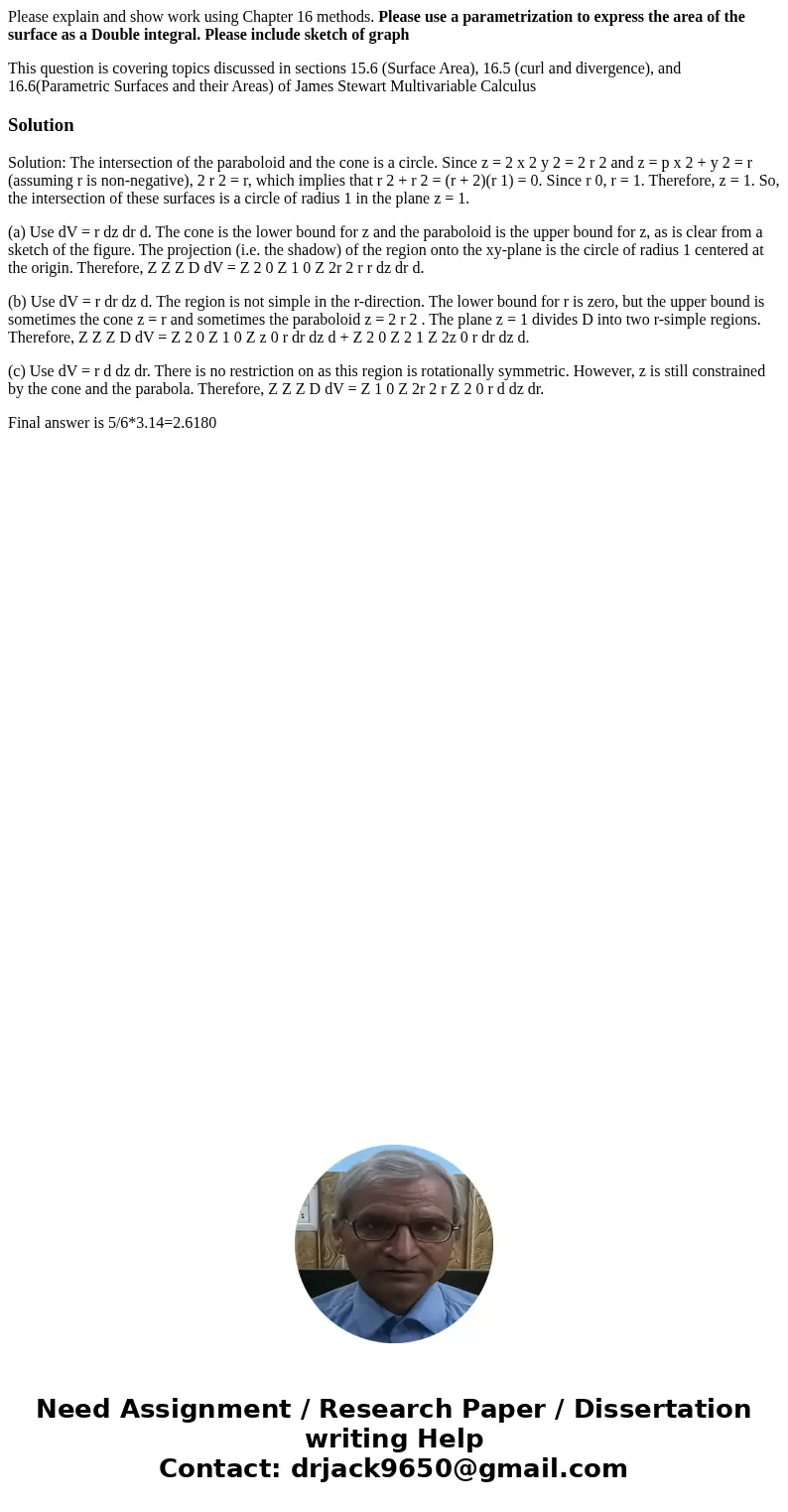Please explain and show work using Chapter 16 methods Please
Please explain and show work using Chapter 16 methods. Please use a parametrization to express the area of the surface as a Double integral. Please include sketch of graph
This question is covering topics discussed in sections 15.6 (Surface Area), 16.5 (curl and divergence), and 16.6(Parametric Surfaces and their Areas) of James Stewart Multivariable Calculus
Solution
Solution: The intersection of the paraboloid and the cone is a circle. Since z = 2 x 2 y 2 = 2 r 2 and z = p x 2 + y 2 = r (assuming r is non-negative), 2 r 2 = r, which implies that r 2 + r 2 = (r + 2)(r 1) = 0. Since r 0, r = 1. Therefore, z = 1. So, the intersection of these surfaces is a circle of radius 1 in the plane z = 1.
(a) Use dV = r dz dr d. The cone is the lower bound for z and the paraboloid is the upper bound for z, as is clear from a sketch of the figure. The projection (i.e. the shadow) of the region onto the xy-plane is the circle of radius 1 centered at the origin. Therefore, Z Z Z D dV = Z 2 0 Z 1 0 Z 2r 2 r r dz dr d.
(b) Use dV = r dr dz d. The region is not simple in the r-direction. The lower bound for r is zero, but the upper bound is sometimes the cone z = r and sometimes the paraboloid z = 2 r 2 . The plane z = 1 divides D into two r-simple regions. Therefore, Z Z Z D dV = Z 2 0 Z 1 0 Z z 0 r dr dz d + Z 2 0 Z 2 1 Z 2z 0 r dr dz d.
(c) Use dV = r d dz dr. There is no restriction on as this region is rotationally symmetric. However, z is still constrained by the cone and the parabola. Therefore, Z Z Z D dV = Z 1 0 Z 2r 2 r Z 2 0 r d dz dr.
Final answer is 5/6*3.14=2.6180

 Homework Sourse
Homework Sourse